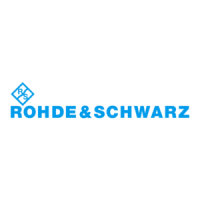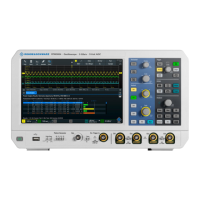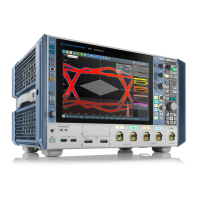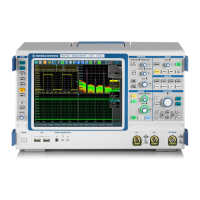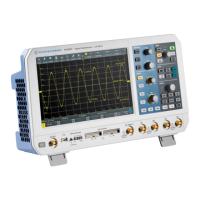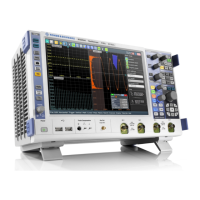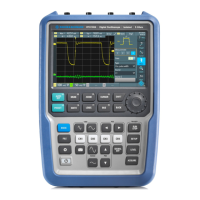Remote Control
R&S
®
RTM20xx
249User Manual 1317.4726.02 ─ 01
Commands
Commands (program messages) are messages the controller sends to the instrument.
They operate the instrument functions and request information. The commands are sub-
divided according to two criteria:
●
According to the effect they have on the instrument:
– Setting commands cause instrument settings such as a reset of the instrument
or setting the frequency.
– Queries cause data to be provided for remote control, e.g. for identification of the
instrument or polling a parameter value. Queries are formed by directly appending
a question mark to the command header.
●
According to their definition in standards:
– Common commands: their function and syntax are precisely defined in standard
IEEE 488.2. They are employed identically on all instruments (if implemented).
They refer to functions such as management of the standardized status registers,
reset and self test.
– Instrument control commands refer to functions depending on the features of
the instrument such as frequency settings. Many of these commands have also
been standardized by the SCPI committee. These commands are marked as
"SCPI compliant" in the command reference chapters. Commands without this
SCPI label are device-specific, however, their syntax follows SCPI rules as per-
mitted by the standard.
Instrument responses
Instrument responses (response messages and service requests) are messages the
instrument sends to the controller after a query. They can contain measurement results,
instrument settings and information on the instrument status.
LAN Interface Messages
In the LAN connection, the interface messages are called low–level control messages.
These messages can be used to emulate interface messages of the GPIB bus.
Command Long term Effect on the instrument
&ABO Abort Aborts processing of the commands just received.
&DCL Device Clear Aborts processing of the commands just received and sets
the command processing software to a defined initial state.
Does not change the instrument setting.
>L Go to Local Transition to the "local" state (manual control).
>R Go to Remote Transition to the "remote" state (remote control).
&GET Group Execute Trigger Triggers a previously active instrument function (e.g. a
sweep). The effect of the command is the same as with that
of a pulse at the external trigger signal input.
&LLO Local Lockout Disables switchover from remote control to manual control
by means of the front panel keys.
Basics
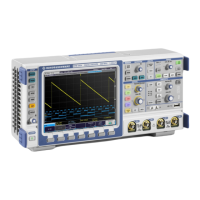
